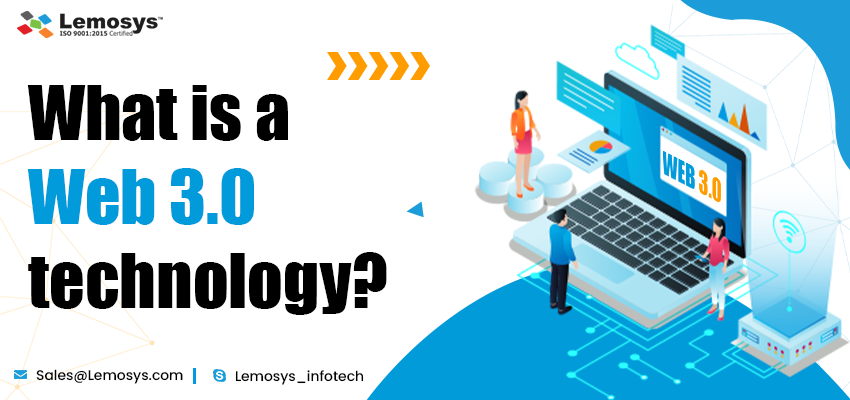Web 3.0 is the next version of the internet, where is the services will run on a blockchain. It is a decentralized internet that runs on a public blockchain & which is also used for cryptocurrency transactions. In this era, artificial Intelligence & Machine Learning enables computers to understand data in the same way that people do.
Web 3.0 is the upcoming third generation of the internet where websites & apps will be able to process information in a smart human-like way through technologies like machine learning (ML), Big Data, decentralized ledger technology (DLT), etc. Web 3.0 was originally called the Semantic Web by World Wide Web inventor Tim Berners-Lee & was aimed at being a more autonomous, intelligent, and open internet.
What makes Web 3.0 so unique?
Web 3’s major benefit is that it seeks to solve the most serious issue that has arisen as a result of Web 2: the gathering of personal data by private networks, which is subsequently sold to marketers or potentially stolen by hackers.
Web 3’s network is decentralized, meaning it is not controlled by a single organization, and the decentralized applications (apps) created on top of it are open.
Properties of Web 3.0
The following are three key characteristics that can help us define Web 3.0:
- Semantic Web
- 3D Graphics
- Artificial Intelligence
What are the Advantages of Web 3.0?
- Expanded data connecting: Semantic web will help in the network of online information.
- More productive web perusing.
- Compelling correspondence.
- More adequate and accurate search results.
- Working on the internet becomes much easier as the internet is personalized.
What are the Disadvantages of Web 3.0:
- Less progressed gadgets won’t have the option to deal with Web 3.0.
- Web 1.0 sites will appear to be substantially more outdated
- It tends to be exceptionally confounding for newcomers to comprehend.
- Easy to get user’s Public/private information.
- People will spend more time surfing the web.
What is Web 3.0 and its examples?
What are some of the examples of web 3.0? Wolfram Alpha and Apple’s Siri are two examples of web 3.0 applications. Siri uses speech recognition techniques and artificial intelligence to search and deliver results
What is Web 1.0?
Traditionally, Web 1.0 is the first generation of the world wide web, where websites were mostly static and used to broadcast and browse for information. Web 1.0 was built on decentralized and community-governed protocols, and the user demographic was mostly content consumers rather than content creators.
What is Web 2.0?
Web 2.0 is the familiar Internet that we know and use today, and comprises more user-generated content and an increased number of use cases other than information browsing, including social media interaction and online shopping.
Conclusion
There are other challenges that need to be solved on the way to Web 3.0. Challenges such as the lack of inherent interoperability between different blockchain networks, the complex implementation of blockchain systems, and the precise coordination needed to ensure that a blockchain network operates properly. But given the considerable benefits and the fact that the Web has always managed to incorporate new technologies, chances are that decentralization will be a significant part of the next major iteration of the Web.
How to Optimize Your Website for On-Page SEO & its Free Tools

